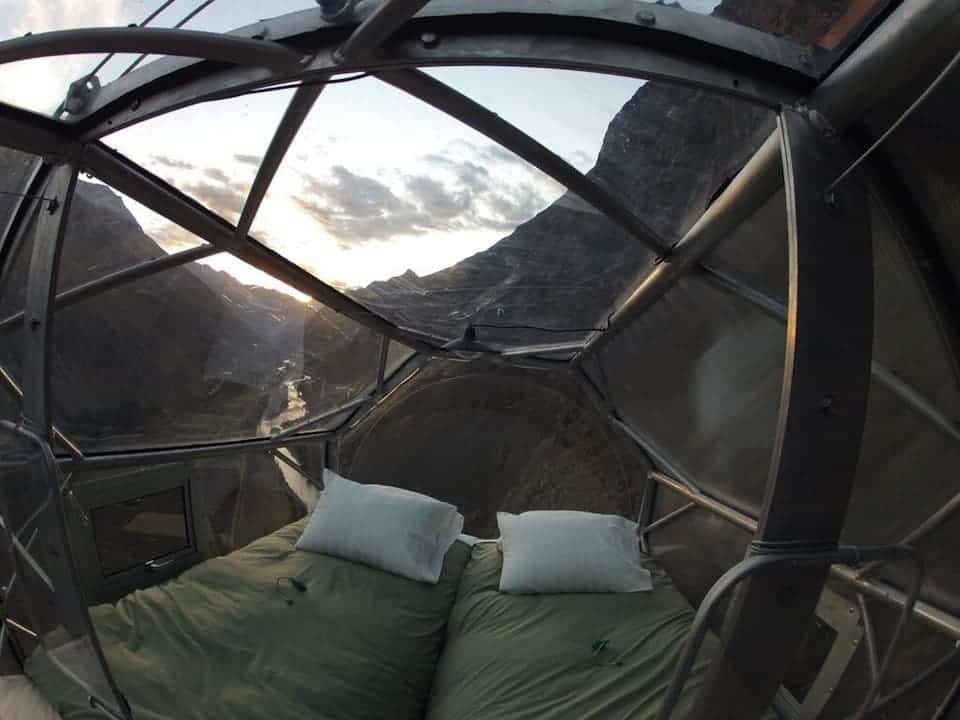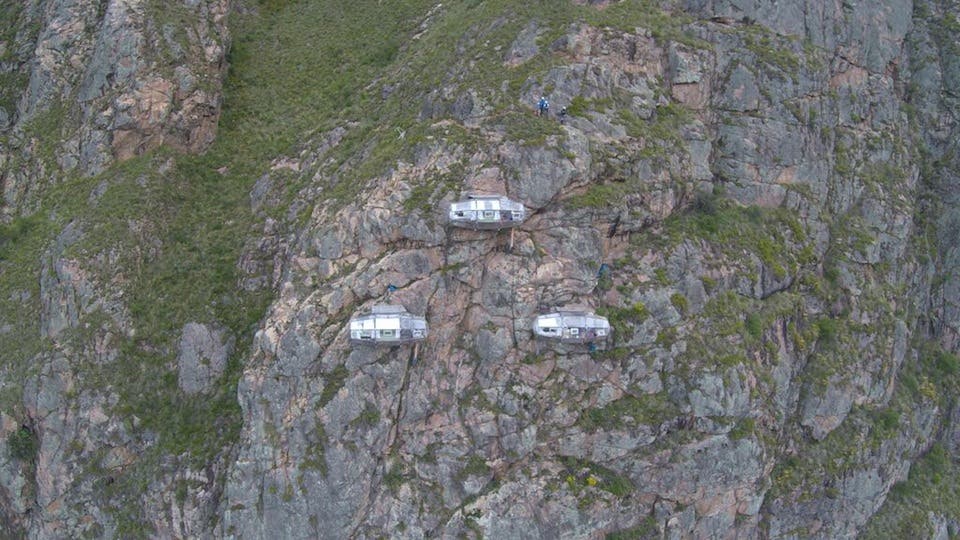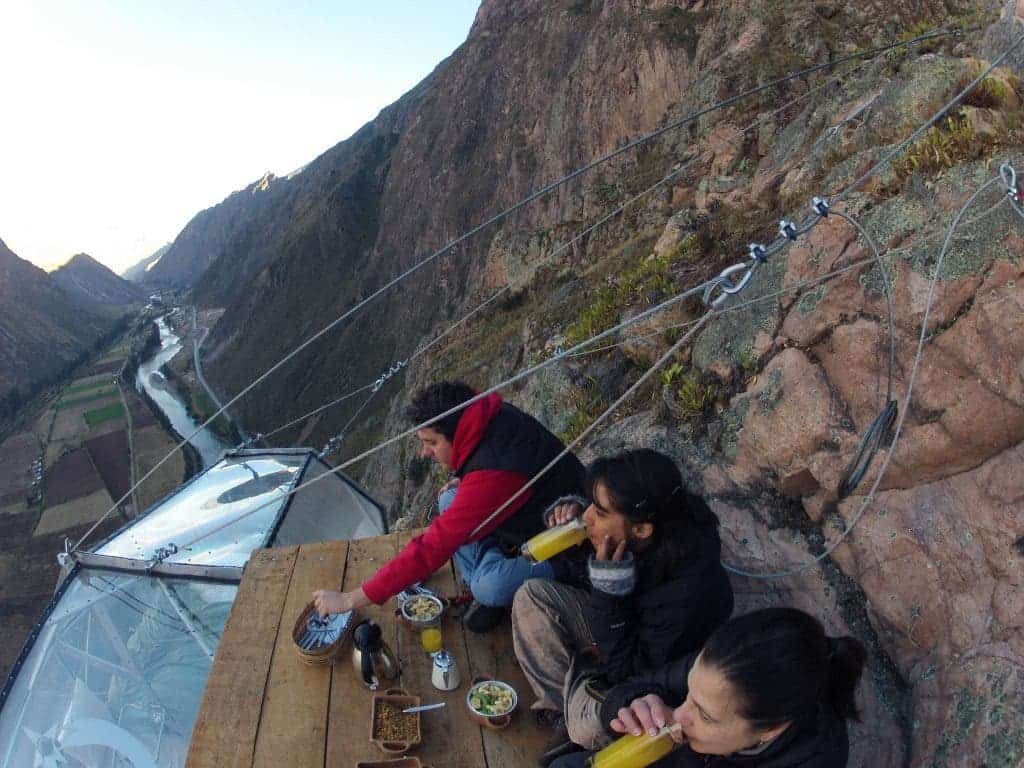Some 150 meters above ground level (400 feet) in the Sacred Valley of the Incas three eerie, transparent capsules hang on the cliffs. These weather resistant polycarbonate call the most unfazed adventurers to sleep inside them, offering an almost 360 view of the valley.
Skylodge Adventure Suites was created by the company Natura Vive, a group of young entrepreneurs who want to offer a unique mountain adventure to people of all ages. But it’s not as easy as booking one of the pods and going there – you have to either finish a challenging hike or climb your way up.
Each 24 ft. by 8 ft. capsule suite holds four beds, a dining area, and bath, and ensures comfortable temperatures throughout the day and the night. They also have some curtains to provide some privacy… from the condors, I guess – they’d be the only ones who could see inside your pod. All in all, they offer a surprising level of comfort.
“The design and features of each suite provides our clients with first class service and complete comfort. Our alternative lighting system consists of four interior lamps and a reading light all powered by solar panels that store energy in batteries. Each suite has a private bathroom separated from the bedroom by an insulated wall. Inside is a dry ecological toilet and sink, where you can still enjoy the gorgeous views through the 1.8 meter diameter dome. The dome also has curtains for privacy from the curious gaze of passing condors (your sky neighbors). Fine quality mattresses, cotton sheets, down pillows, and quilts ensure a warm and pleasant night 400 meters from the ground.”

However, they come at quite a hefty price – over $300 a night – but the experience is indeed unique.











